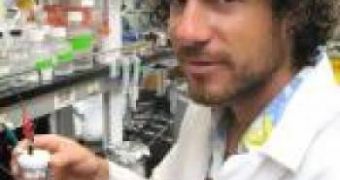Biologists at the University of California in Santa Barbara (UCSB) have recently developed a new model for explaining the actions of the billions of molecular “switches” that allow for life to happen inside the human body. Every single action that goes on in a cell or an organ is carefully coordinated via these molecules, which have the ability to do just about anything. Their discovery could lead to a better understanding of how the human body works, and could also set the basis for creating highly effective biological sensors.
These sensors could detect disease markers, and chemicals ranging from drugs to explosives inside suspicious packages. At this point, existing technologies that deal with these threats are still in their early stages, and making use of this knowledge would allow for progress to run smoother and faster. Details of the find are published in the latest issue of the journal Proceedings of the National Academy of Sciences (PNAS).
“These switching molecules control the behavior of our cells. By studying these switches, we can better understand how living organisms are able to monitor their environment and use this knowledge to build better sensors to detect, for example, disease markers,” UCSB postdoctoral scholar Alexis Vallee-Belisle, the leader of the project and the first author of the PNAS paper, explains. He says that biological sensors could be made to mimic the exact actions of molecular switches in the future, which would significantly improve their efficacy and success rate.
These structures are present in all living things, and biologists have long since argued that they are required in order for the organism (humans, bacteria and everything in between) to be able to adapt to its environment. It's these receptors that, for example, alert us that food is nearby, or that a certain smell is dangerous. Essentially, what the UCSB effort did was to derive the mathematical relationships underlying the switching process. Thanks to the investigation, researchers will be able to fine-tune the sensitivity of the triggers required to flip a molecular switch on and off from now on.

 14 DAY TRIAL //
14 DAY TRIAL //